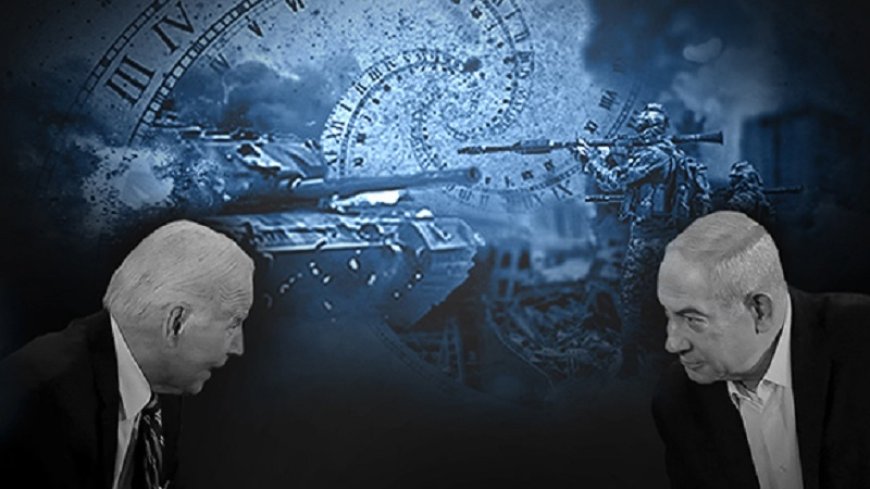Operation True Promise II: A New Geopolitical Reality in the Face of Israeli Wars

By: M. S. Qorbani
In the early hours of October 1, 2024, the Islamic Republic of Iran launched a calculated military strike in response to the assassination of key leaders within the Axis of Resistance, a maneuver that reverberated across the Middle East. The high-profile targets—Ismail Haniyeh assassinated on Iranian soil; Hezbollah’s former Secretary General Syed Hassan Nasrallah; and General Abbas Nilforoshan, Deputy Chief of Operations for the Islamic Revolutionary Guard Corps (IRGC) in Lebanon—were casualties of an Israeli agenda designed to undermine Iran's security and stability.
This retaliatory action involving precise ballistic missile strikes against Israeli military bases was not merely a display of military might; it was a profound statement of Iran's unwavering commitment to defend its sovereignty, national dignity, and strategic deterrence—an inviolable red line.
This measured response transcended impulsive vengeance; it epitomized strategic foresight. Iran’s patience, long subjected to Israeli provocations in Lebanon and repeated assaults on Hezbollah, had reached a critical threshold. The missile strikes were meticulously aimed at Israeli military installations and airbases with the intent of diminishing the Israeli air force's dominance over southern Lebanon; hence, this recalibration of the balance of power served to bolster the resistance forces, who, lacking advanced air defense systems, had long endured relentless Israeli aggression; in doing so, Iran not only mitigated the Israeli regime's military advantage but also reinvigorated the resolve of resistance forces, inspiring them to persist in their struggle with renewed vigor.
The implications of this operation extended far beyond immediate military objectives. Iran’s retaliation shattered the facade of invulnerability that the Netanyahu administration had meticulously cultivated, particularly in the aftermath of the events of October 7, 2023. The Israeli regime frequently boasting of its impregnable defense systems like the Iron Dome was exposed as profoundly vulnerable, its military superiority pierced by Iran’s advanced ballistic capabilities, which underscored for the international community that Iran remains a formidable power capable of disrupting the ambitions of the Israeli regime and destabilizing its ongoing occupation.
Significantly, Iran's avoidance of civilian targets during its strikes conveyed a diplomatic message to the world: while capable of escalating the conflict, Tehran opted for restraint—at least for now. This strategic démarche creates a space for international actors, particularly the United States, to pressure the Israeli regime to de-escalate tensions, recognizing that any further misstep could trigger a regional conflagration; thus, Iran's sophisticated missile response positions it as a stabilizing force that defends its red lines while signaling to global powers its intent to avoid the broader devastation of war.
Moreover, the missile strikes not only showcased Iran’s military capabilities but also reaffirmed its geopolitical influence. By successfully breaching the Israeli regime’s defenses, Iran demonstrated the growing sophistication of its military strategy, firmly rooted in a careful balance of power theory. Analysts such as William Alberque, former director of NATO’s arms control program, have noted that Iran's missile capabilities represent not just a technical achievement but a strategic asset that reshapes the geopolitical landscape; Alberque’s acknowledgment of Iran’s military prowess attests to the Islamic Republic’s evolution into a regional power whose actions can redefine the contours of the Middle East.
Operation True Promise II has further solidified Iran’s standing among the peoples of the region. The heinous acts perpetrated by the Israeli regime have engendered widespread outrage, uniting Arab and West Asian public opinion against the occupiers. Iran’s steadfast support for resistance movements—whether in Lebanon, Palestine, Yemen, or Iraq—has elevated its prestige to unprecedented heights; the spectacle of countless Iranian flags at public demonstrations and the surge of pro-Iran sentiments on social media reflect a deepening admiration for Iran's resilience in the face of Israeli and imperialist aggression.
In the shifting power dynamics of the Middle East, Iran’s role cannot be underestimated. Its regional influence, particularly in the context of its support for the resistance, has fundamentally altered the equations of power; the provocations from the Israeli regime aimed at undermining Iran’s standing have instead prompted a recalibration of regional alliances as nations reassess their positions in light of Iran’s decisive response; the ramifications of Iran's actions may compel the Israeli regime and its Western allies to reconsider their aggressive postures given the looming threat of a full-scale conflict.
Internally, this military achievement has fortified national unity within Iran, quelling social unrest and bolstering confidence in the current administration. The martyrdom of revered leaders like Haniyeh and Nasrallah has ignited a renewed sense of purpose, rallying the Iranian citizens around their government’s unwavering commitment to defend the nation’s dignity. Meanwhile, the Israeli regime and the United States must grapple with the sobering realization that their attempts to undermine Iran have only strengthened its resolve and elevated its stature on the global stage.
Operation True Promise II stands as a testament to Iran’s resilience and strategic acumen, illuminating the vulnerabilities of the Israeli regime and its allies while galvanizing support for resistance movements across the region. The potential for a recalibration of alliances is palpable as countries reassess their positions in light of Iran's assertive moves and the shifting landscape of military power.
Thus, as the world watches and waits, it becomes clear that the path forward lies in a delicate balance of power where diplomacy and dialogue can illuminate a way out of the shadows of conflict, and in an era marked by uncertainty and shifting dynamics, the imperative for mutual respect and understanding is more crucial than ever as the region grapples with the intricate interplay of power resistance and the quest for lasting peace.













































